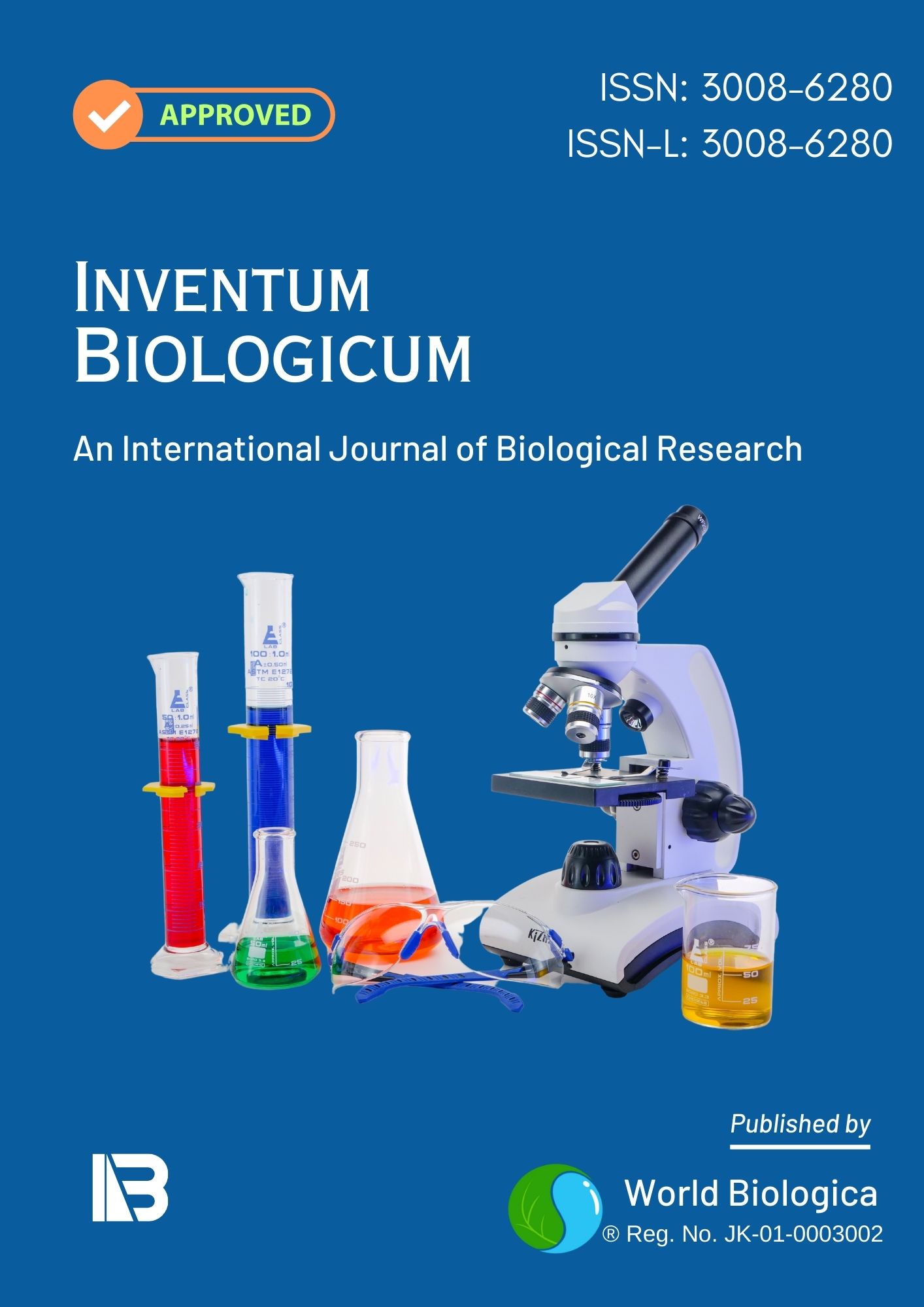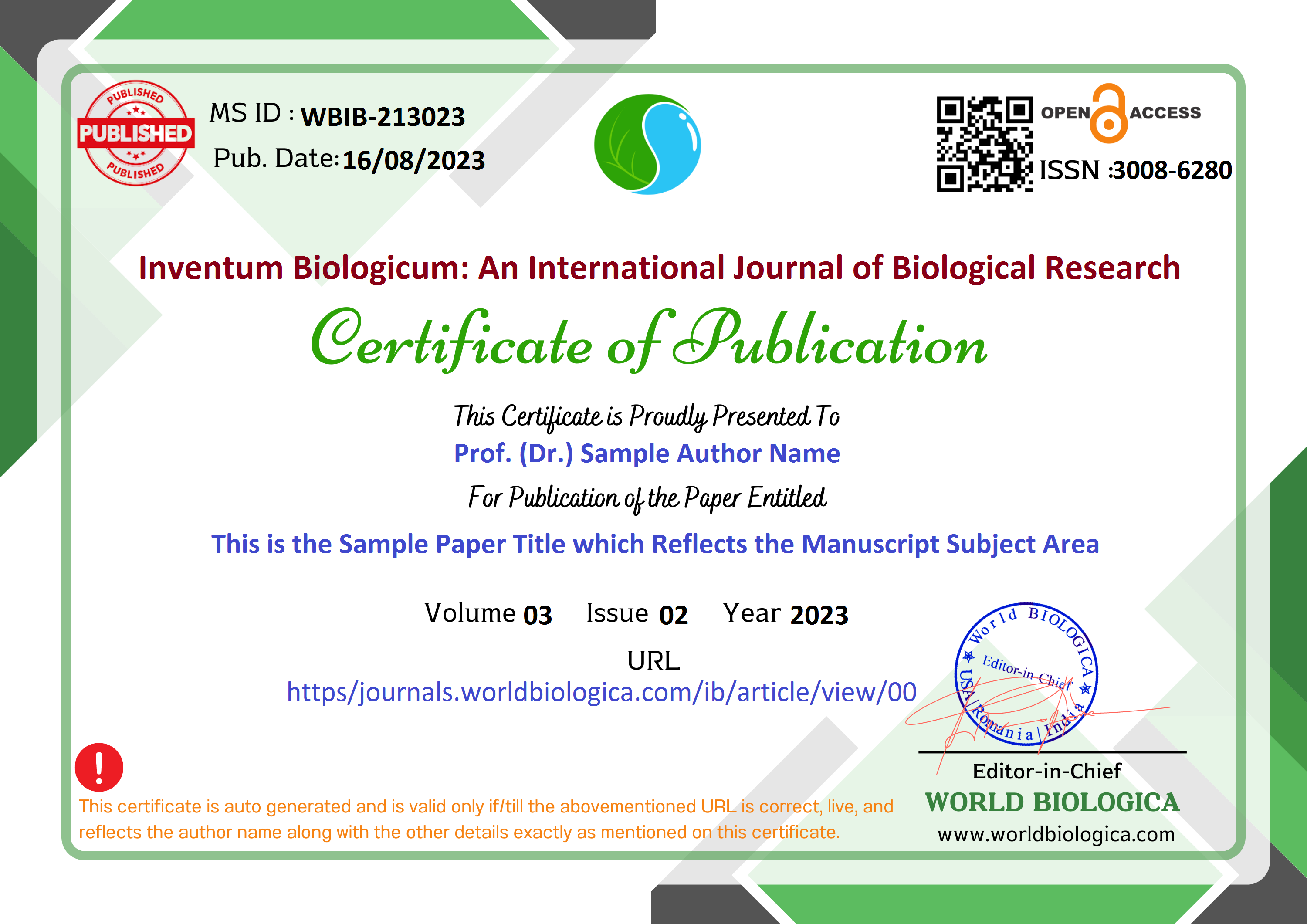Ethnomedicinal Significance of Selected Fabaceae Members Utilized by Traditional Healers in Panna, Madhya Pradesh
Keywords:
Fabaceae, Ethnomedicine, Traditional healers, Bioactive compoundsAbstract
The Fabaceae family, commonly known as the legume or pea family, holds significant ethnomedicinal importance globally due to its diverse array of medicinal plants. Fabaceae species have been utilized for centuries in traditional medicine across cultures, showcasing their versatility in treating a wide range of ailments. The family's plants contain bioactive compounds contributing to their pharmacological properties. In Panna district, several species of Fabaceae have been traditionally utilized by local communities for their therapeutic benefits. These plants are often used in the treatment of various ailments such as fever, digestive disorders, skin infections, and respiratory ailments.
The ethnomedicinal knowledge related to Fabaceae in Panna district is deeply rooted in the cultural heritage of the indigenous populations. Traditional healers, known as vaidyas or bhagats, play a vital role in preserving and transmitting this knowledge through oral traditions and practices. Their expertise in identifying and using different parts of Fabaceae plants for medicinal purposes reflects centuries-old wisdom passed down through generations. Furthermore, the sustainable harvesting and utilization of Fabaceae plants for medicinal purposes contribute to the conservation of biodiversity in the region. This paper underscores the ethnomedicinal significance of Fabaceae in Panna district, emphasizing the need for collaborative efforts between traditional knowledge holders, researchers, and conservationists to document, validate, and integrate this valuable traditional knowledge into modern healthcare systems.
Downloads
References
Asfaw, M. M., & Abebe, F. B. (2021). Traditional medicinal plant species belonging to Fabaceae family in Ethiopia: A systematic review. International Journal of Plant Biology, 12(1), 8473.
Benarba, B. (2016). Medicinal plants used by traditi-onal healers from South-West Algeria: An ethnobotan-ical study. Journal of Intercultural ethnopharmaco-logy, 5(4), 320.
Cholil, M. (2017). Complexities in dealing with gender inequality: Muslim women and mosque-based social services in East Java Indonesia. Journal of Indonesian Islam, 11(2).
Gras, A., Hidalgo, O., D’ambrosio, U., Parada, M., Garnatje, T., & Valles, J. (2021). The role of botanical families in medicinal ethnobotany: A phylogenetic perspective. Plants, 10(1), 163.
Gwalwanshi, D. R., Bishwas, A. J., & Vyas, D. (2014). Biodiversity of ethno medicinal plants used by traditional healers in selected remote villages of Panna district (Madhya Pradesh), India. Journal of Medicinal Plants Studies, 2(1), 10-17.
Hailemariam, M. B., Woldu, Z., Asfaw, Z., & Lulekal, E. (2021). Ethnobotany of an indigenous tree Piliostigma thonningii (Schumach.) Milne-Redh.(Fabaceae) in the arid and semi-arid areas of South Omo Zone, southern Ethiopia. Journal of Ethnobiology and Ethnomedicine, 17, 1-18.
Ishaq, A. R., El-Nashar, H. A., Younis, T., Mangat, M. A., Shahzadi, M., Ul Haq, A. S., & El-Shazly, M. (2022). Genus Lupinus (Fabaceae): A review of ethnobotanical, phytochemical and biological studies. Journal of Pharmacy and Pharmacology, 74(12), 1700-1717.
Jain, S. K., & Tarafder, C. R. (1970). Ethnobotany of Madhya Pradesh: I. Plants used by the Bharia tribe. Economic Botany, 24(2), 223-230.
Joshi, P., & Joshi, P. (2013). Ethnomedicinal plants used for diarrhea by tribals of Madhya Pradesh, India. Asian Pacific Journal of Tropical Biomedicine, 3(3), 238-245.
Kala, C. P. (2005). Ethnomedicinal botany of the Apatani in the Eastern Himalayan region of India. Journal of Ethnobiology and Ethnomedicine, 1(1), 11.
Macêdo, M. J. F., Ribeiro, D. A., Santos, M. D. O., Macêdo, D. G. D., Macedo, J. G. F., Almeida, B. V. D., ... & Souza, M. M. D. A. (2018). Fabaceae medicinal flora with therapeutic potential in Savanna areas in the Chapada do Araripe, Northeastern Brazil. Revista Brasileira de Farmacognosia, 28, 738-750.
Macêdo, N. S., Silveira, Z. D. S., Bezerra, A. H., Costa, J. G. M. D., Coutinho, H. D. M., Romano, B., ... & da Silva, M. V. (2020). Caesalpinia ferrea C. Mart.(Fabaceae) phytoch-emistry, ethnobotany, and bioactivities: a revie-w. Molecules, 25(17), 3831.
Maroyi, A. (2023). Medicinal uses of the Fabaceae family in Zimbabwe: A review. Plants, 12(6), 1255.
Mothogoane, M. S. (2019). Studies on the medicinally important Rhynchosia (Phaseoleae, Fabaceae) species: taxonomy, ethnobotany, phytochemistry and antimi-crobial activity. University of Johannesburg (South Africa).
Patil, P., & Patil, D. (2011). Traditional herbal medicines used for the treatment of skin diseases in Akola district. Indian Journal of Traditional Knowledge, 10(2), 299-304.
Pieroni, A., Houlihan, L., Ansari, N., Hussain, B., & Aslam, S. (2007). Medicinal perceptions of vegetables traditionally consumed by South-Asian migrants living in Bradford, Northern England. Journal of ethnop-harmacology, 113(1), 100-110.
Sahu, A. R., Sahu, M., & Mishra, S. (2020). A preliminary report on traditional use of selected plants of Fabaceae family at Bargarh district, Western Odisha. Int J Herb Med, 8, 109-13.
Sharma, M., & Kumar, A. (2013). Leguminosae (Faba-ceae) in tribal medicines. Journal of Pharmacognosy and Phytochemistry, 2(1), 276-283.
Shukla, V. J., et al. (2009). Medicinal plants from tribal area of Madhya Pradesh: An ethnomedicinal survey. International Journal of Green Pharmacy, 3(1), 78-82.
Singh, N., Singh, A., & Pabla, D. (2019). A review on medicinal uses of Bauhinia variegata Linn. Phar-maTutor, 7(6), 12-17.
Stohs, S. J., & Bagchi, D. (2015). Antioxidant, anti‐inflammatory, and chemoprotective properties of Acacia catechu heartwood extracts. Phytotherapy research, 29(6), 818-824.
Subhan, N., Burrows, G. E., Kerr, P. G., & Obied, H. K. (2018). Phytochemistry, ethnomedicine, and pharma-cology of Acacia. Studies in Natural Products Chemi-stry, 57, 247-326.
Surendran, S., Prabha, A. C., Ramasubbu, R., & Krish-naraj, M. V. (2021). Humboldtia Vahl (Fabaceae): a review on ethnobotany, phytochemistry and pharm-acology. Phytomedicine Plus, 1(3), 100080.
Sutjaritjai, N., Panyadee, P., Phumthum, M., Inta, A., & Balslev, H. (2022). High diversity of medicinal uses of Thai legumes (Fabaceae) and their potential in public herbal medicine. Diversity, 14(8), 588.
Tirkey, A. (2006). Some ethnomedicinal plants of family-Fabaceae of Chhattisgarh state.
Van Wyk, B. E., & Albrecht, C. (2008). A review of the taxonomy, ethnobotany, chemistry and pharmacology of Sutherlandia frutescens (Fabaceae). Journal of ethno-pharmacology, 119(3), 620-629.
Downloads
-
Download PDF
 Abstract Views: 204,
Abstract Views: 204,  Download PDF: 152
Download PDF: 152
Published
How to Cite
Issue
Section
License
Copyright (c) 2024 Inventum Biologicum: An International Journal of Biological Research

This work is licensed under a Creative Commons Attribution-NonCommercial-NoDerivatives 4.0 International License.


















